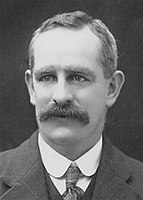Australian general election, 1919
|
|
||||||||||||||||||||||||||||
|
||||||||||||||||||||||||||||
|
All 75 seats in the House of Representatives 38 seats were needed for a majority in the House 19 (of the 36) seats in the Senate |
||||||||||||||||||||||||||||
|---|---|---|---|---|---|---|---|---|---|---|---|---|---|---|---|---|---|---|---|---|---|---|---|---|---|---|---|---|
|
||||||||||||||||||||||||||||
|
||||||||||||||||||||||||||||
Federal elections were held in Australia on 13 December 1919. All 75 seats in the House of Representatives, and 19 of the 36 seats in the Senate were up for election. The incumbent Nationalist Party, led by Prime Minister Billy Hughes, defeated the opposition Labor Party led by Frank Tudor.
The government changed the lower-house voting system from first-past-the-post to full-preference preferential voting after the 1918 Swan by-election saw a split in the vote between Nationalist and Country Party candidates, causing Labor with the largest primary vote to unexpectedly win the by-election. Full-preference preferential voting has remained in place since, allowing the non-Labor parties to safely contest the same seats.
The election was held in conjunction with two referendum questions, neither of which was carried.
...
Wikipedia


